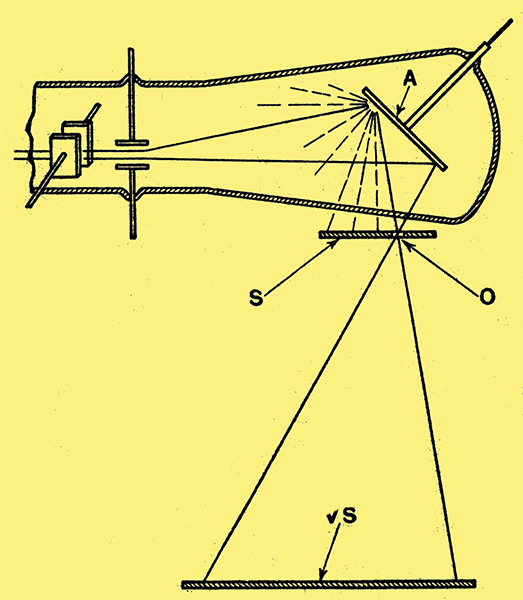|

Combining the principles of the cathode-ray and X-ray tube.
The cathode-ray tube, when used as a television receiver, is handicapped from one point of view by the tact that the fluorescent screen must be housed inside the glass bulb. This, combined with the low light intensity of the fluorescent effect, places a definite limit on the size of the received picture. Many attempts have been made to overcome this difficulty, though so far with but little success.
One suggestion is to utilise the electronic stream, not as a source of fluorescence inside the bulb, but as a generator of X-rays (after the well-known manner of Dr Rontgen). The X-rays are then focused through a sort of pin-hole camera on to a viewing screen, which is arranged outside the glass bulb, where there is no restriction on its size.
As shown in the figure, the cathode ray first passes through the usual control and scanning electrodes and is then made to impinge upon an anti-cathode A, Where it produces bundles of X-rays. The rays readily pass through the glass walls of the tube, where they are intercepted by an opaque shutter S of lead, pierced with a central aperture O. This serves as a pin-hole camera so that an image of each point of the anti-cathode A is focused on to a fluorescent viewing screen VS.
Since the fluorescent effect of X-rays is known to be much more intense than that of the ordinary cathode-ray stream, some, at least, of the loss due to the use of the pin-hole camera is made good in this way.
|